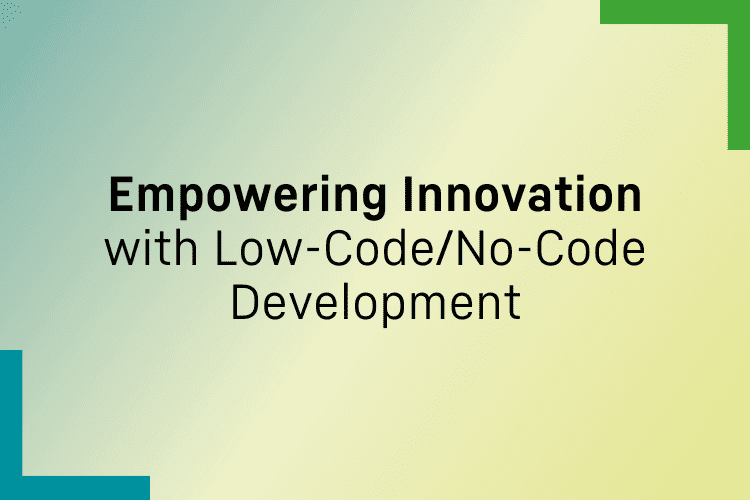by Aseel Al-Dabbagh
Share
by Aseel Al-Dabbagh

How do you like checking your emails while relaxing with your morning coffee? Do you prefer to take an afternoon stroll in a neighborhood park during your break? The COVID-19 pandemic accelerated and cemented the shift to remote work. But beyond the initial chaos of the pandemic, collaborative technologies have redefined how we work. In this blog post, we will discuss the strategies of remote work implementation and the trade-offs businesses and individuals might make in adjusting to the new era.
Emerging Technologies and Tools: Powering Remote Collaboration
When it comes to the future of remote work, innovation will focus on improving connectivity and the ability to collaborate regardless of location. A few main areas of potential advancement stand out:
01 – Enhanced Virtual Collaboration Tools
can facilitate virtual meetings, brainstorming sessions, and project management. Augmented Reality (AR) and Virtual Reality (VR) can offer immersive environments that mimic physical office spaces.
02 – AI and Machine Learning Integration
may automate routine tasks, enhance project management tools, and set daily priorities to improve productivity and work-life balance. AI-driven analytics could also offer insights into team performance and well-being.
03- Cybersecurity Enhancements
must become more sophisticated as remote work expands the attack surface of organizations. We can hope for improved end-to-end encryption, secure access management, and AI-driven threat detection to protect sensitive data and ensure secure remote access.
04 – High-Speed Internet Access and Infrastructure
will enable more reliable and efficient remote work, reducing connectivity issues and supporting more bandwidth-intensive technologies like real-time video conferencing and large data transfers.
05 – Cloud and Edge Computing
will continue to be essential for remote work, offering scalable resources and storage. Edge computing will gain importance, processing data closer to where it’s generated.
06 – Digital Wellbeing Tools
can help mitigate the downsides of blurring personal and professional life. Technologies focused on digital well-being will become more prevalent. These might include features to encourage breaks, reduce digital overload, and help manage work-life balance more.
07 – Smart Workspaces
that integrate with home environments could enhance productivity and comfort. These may include automated lighting, temperature control, and even robotic assistants to manage household tasks.
08 – Wearable Technology
could play a larger role in remote work by tracking health and wellness, managing notifications, and even integrating with AR for hands-free information access and collaboration.
09 – Blockchain Technology
might be used more extensively to verify identities securely, manage contracts, and ensure the integrity of remote transactions and collaborations.
The evolution of remote work technologies will continue to be driven by the needs of a global workforce, emphasizing flexibility and efficiency. Businesses should be proactive about creating a company culture that works for hybrid and virtual environments.
Challenges and Solutions: Navigating the Road Ahead
The shift to remote work is not without its challenges and drawbacks. Below, we explore these challenges in more depth and propose solutions to ensure a smooth transition.
- Cultural and Unity Challenges: The physical separation inherent in remote work can dilute a company’s culture and the feeling of unity among employees. Solution: Companies can counteract this by organizing regular virtual team-building activities that are not work-related, using AR and VR to create shared experiences that create a greater sense of belonging.
- Inequality in Access and Experience: Differences in access to high-quality AR and VR equipment can create disparities among employees. Solution: Businesses can provide standardized equipment as part of their remote work setup or offer stipends to ensure all employees have access to the necessary technology.
- Over-reliance on Technology: An over-dependence on technology might neglect the value of face-to-face interaction. Solution: Companies should encourage and facilitate in-person meetups where feasible. Team meetings and annual retreats can go a long way towards strengthening relationships.
- Privacy and Security Concerns: The use of advanced technologies raises questions about employee privacy and data security. Solution: Implementing strict data protection policies, using secure platforms for AR and VR interactions, and providing training on cybersecurity best practices can help mitigate these risks. Transparency about data collection and usage is also crucial.
- Physical and Mental Health Implications: Extended use of AR and VR can lead to physical discomfort and mental health issues. Solution: Promoting regular breaks, offering guidance on setting up a comfortable workspace, and providing access to wellness resources can alleviate these concerns.
- Technological Adaptation and Training: The rapid pace of technological change can be overwhelming. Solution: Providing comprehensive training sessions and continuous support can ease the introduction of new technologies.
Communication barriers, heightened by time zone differences and cultural nuances, remain a significant challenge. Centralized communication platforms like Slack have been instrumental in bringing these gaps. Data security continues to be a paramount concern, with businesses increasingly relying on VPNs and multi-factor authentication to safeguard sensitive information. Moreover, maintaining a healthy work-life balance is as critical as ever. Regular virtual check-ins and the use of flexible scheduling tools like Calendly are essential strategies to help employees delineate their professional and personal lives, ultimately preventing burnout.
A Future Beyond Borders
The workplace now transcends geographical boundaries, which demands innovations in response. Navigating this digital shift, we businesses will have to think hard about the integration of technologies and strategies. The creation of a welcoming virtual work environment will become a part of workers’ expectation of a company’s culture. Executives in HR, recruiting, and IT will have to think globally about their adaptation of technologies.




